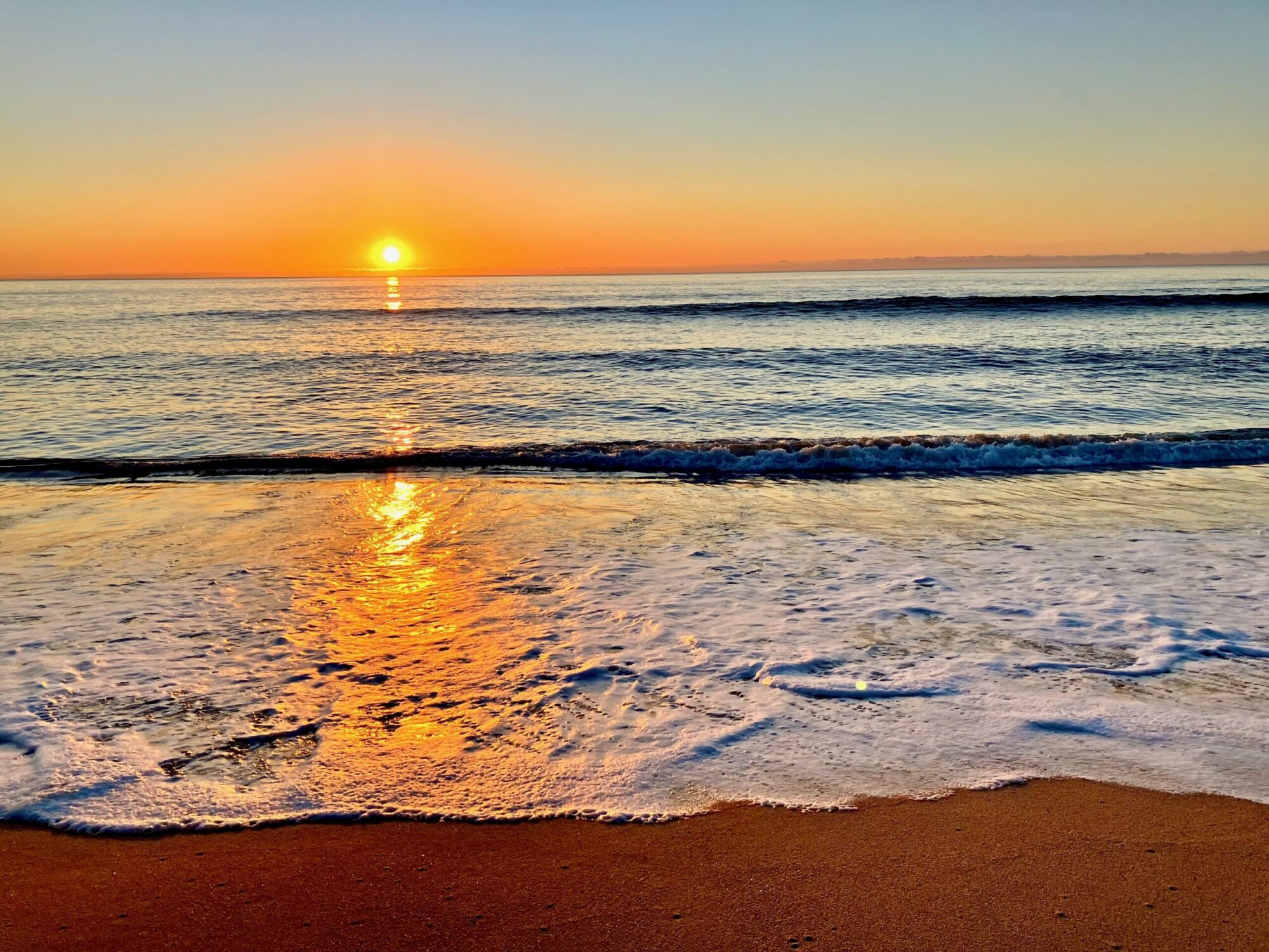We’ve been walking early in the morning on the beach in front of our house. When I say early, I mean REALLY early…stars out, still dark. It’s cooler at 5:45AM and there aren’t any bugs out yet. The breeze is delightful, not too hot, not too cold–just right. Although these mornings the moon is merely a crescent, it still puts out some light, but we have to watch our step. We are using a “chuck-it” to throw a tennis ball for our 2 year old German shepherd, and she finds it with her super sense of hearing. We are the ones having trouble finding it after she puts it down. It’s so dark! Ha ha. You probably think we’re crazy, and maybe we are. I’ve been accused of that before. My students used to say, “You’re crazy, Mrs. F., but in a good way.”
Yesterday we found seven new turtle nests. For the last month or so, we’ve marked all of the ones we’ve found using a circle of sticks; there is an abundance of sticks now since the hurricane winds and rain and blew and washed them all down the arroyos to the beach. Handy, I’d say. We see the mom turtle tracks going up from the water and when we locate the nest, we can see her tracks going back down to the ocean. The sand is soft and disturbed where she has deposited her eggs and it is in a circular shape. We mark them so the stupid people who drive all over the beach won’t run over them.
We believe most of these nests are of the Olive Ridley variety. They are the smallest of the sea turtles and they are listed as endangered.

One of the nests we have marked with sticks. (Look closely, just before the rocks to the left).
Yesterday we found the last four baby turtles of one of the hatchings! It is fascinating to watch the little ones on their way to the water. They are vulnerable and have a perilous journey to reach the ocean. Even though it is against the law to drive vehicles on the beach here, people do it all the time.

I wish people would show respect and not drive on the beach.
In the process, they may run over nests. Even if they don’t drive over the nests, they leave huge ruts from their tires. The little babies have to traverse the obstacles all the way down to the water. The tire tracks made by thoughtless humans make it harder than it needs to be. Once in the water, the shore break causes them even more trouble. They finally get into the water and next comes a big crashing wave to push them back onto the shore. Sometimes they get upside down and can’t right themselves. Of course we can’t just leave them like that, can we?

A photo of a hatchling I took about a year ago.
Holding a baby turtle in my hand is one of the biggest thrills I’ve had in my life. Oh, and don’t worry. Our dog does not bother the nests or the turtles when we come upon them. I do have to admit that we sometimes “help” the little ones into the water; sometimes wading out in between waves to give them a head start. This helps eliminate the issue of getting pushed back up onto the beach. According to what we’ve read, only about 1% make it to adulthood.

Another of the 15 or so nests we’ve marked.
Living here affords us the pleasure of witnessing these miracles for ourselves. Not just on TV or through pictures in a book. We are blessed, to say the least. The whales are going to start showing up soon too.
**************
All of the the following is from National Geographic.com: http://animals.nationalgeographic.com/animals/reptiles/olive-ridley-sea-turtle/
“Olive ridleys have nesting sites all over the world, on tropical and subtropical beaches. During nesting, they use the wind and the tide to help them reach the beach. Females lay about a hundred eggs, but may nest up to three times a year. The nesting season is from June to December…Hatchlings, most of which perish before reaching the ocean, are preyed on by crabs, raccoons, pigs, snakes, and birds, among others. Adults are often taken by sharks.”
SAD, BUT TRUE: If you want to see a 30 sec. video showing their travail to reach the water, go to: http://video.nationalgeographic.com/video/turtles-baby-predation?source=relatedvideo
Fast Facts
- Type:
- Reptile
- Diet:
- Omnivore
- Average life span in the wild:
- 50 years
- Size:
- 2 to 2.5 ft (62 to 70 cm)
- Weight:
- Up to 100 lbs (45 kg)
- Protection status:
- Endangered
- Did you know?
- Male olive ridleys can be distinguished from females by their tails, which stick out beyond their carapace.
- Size relative to a 6-ft (2-m) man:

“Females aren’t sexually mature until about ten to twelve years of age. They nest every one to three years and may lay several clutches of eggs each season. Highly migratory animals, they often travel hundreds of miles (kilometers) to reach their nesting beach, usually the same beach they hatched from.”
From National Geographic: http://animals.nationalgeographic.com/animals/reptiles/kemps-ridley-sea-turtle/

My doodle…inspired by the real thing.
